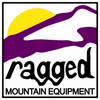Visitors to our shop are often seasoned outdoorspeople. We do receive many questions from those who are less experienced and sometimes afraid to ask. We love sharing our experiences and ensuring that those who are more novice or new to the activities are able to enjoy the outdoors no matter their experience level!
 One of the frequent questions surrounds the differences between alpine touring (AT) and backcountry (BC) skis. We will share some of this information in the hope that it will help you understand more and visit our store with all of the information you need to feel comfortable and jump into this amazing sport!
One of the frequent questions surrounds the differences between alpine touring (AT) and backcountry (BC) skis. We will share some of this information in the hope that it will help you understand more and visit our store with all of the information you need to feel comfortable and jump into this amazing sport!
Alpine touring requires skis, as well as alpine touring bindings, boots, and skins. For AT, you can use your regular downhill skis if you choose. The bindings are quite different, as they allow your boot to either lock in like an alpine binding or pivot freely more like a XC binding.
Free-heeling uphill gives you more mobility, allowing you to burn some calories and earn your turns on the way to the top. (It also means guilt-free aprés ski.)
Your AT setup will include skins. These are cool nylon or mohair strips that attach to the bottom of your skis and feel like a cat’s tongue. Their purpose is to offer traction and keep you from moving backward when you push uphill.
AT boots offer a lot more flex in the ankle when walking or going uphill and are usually much lighter than your typical downhill boots. While you can sometimes use your alpine boots with an AT setup depending on the type of AT binding, you will probably be way more comfortable on a long trek with boots specifically formulated for AT.
When the time comes to go downhill, simply lock your AT bindings, point, and go. Just try not to be too hard on those who might have taken a chairlift to the top. They’ll understand what they’re missing later.
Backcountry skiing is skiing in areas that aren’t maintained by ski area personnel. It’s not downhill skiing and is more focused on exploration.
Backcountry skis are typically metal edged. Wider and built more sturdier than cross-country (XC) skis, they are ideal for making your own tracks in the backcountry. They afford skiers enhanced control and maneuverability in icy conditions, as well as more flotation in deeper snow.
Because of their construction, the skis are heavier than XC skis, and built for the backcountry. Typically, alpine skis or AT skis may have between 80-105mm underfoot; while BC skis may be narrower with less side cut (or shape), in the range of 65-105mm underfoot, allowing for easier touring through deeper snow conditions.
The shape of a BC ski is also vital to its function. Many BC skis made have a traditional double camber often referred to as having a "wax pocket" (a slight arch in the middle) where the waxless scale pattern is placed, or where you would apply a "kick wax" if you've purchased a wax ski. Some BC skis may also have a rockered shovel at the front to offer you a lift over powder difficult or "mank" snow conditions.
There are more aspects to consider, and our team here at our shop is always happy to use our decades of combined experience to assist. Drop us a line or stop by our retail store during business hours to learn more!
